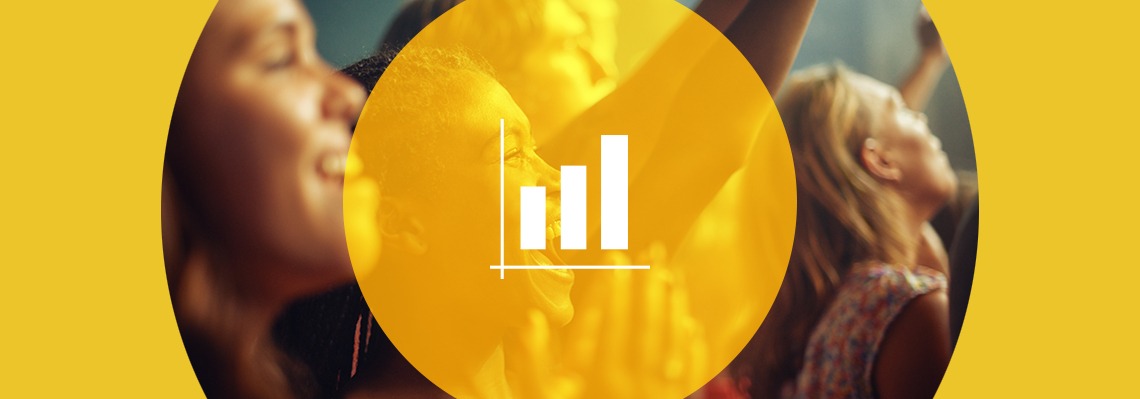
Experiential Qualitative Research: Trajectory’s Innovative Approach
There are few ways to gather fresh marketing insights as effectively as the old faithful: qualitative research. Getting in a room for an open-end conversion with your consumer is a sure-fire way to discover the elusive unknown unknowns about your brand, your category and your consumer with depth and breadth. Easier said than done, I know.
Qualitative research has many moving parts to get right but there are a few aspects that are particularly tough to nail — all of which are solvable by thinking outside the box of traditional qual:
- Making sure you’ll have the right participants in the room — ones that legitimately match your target definition and who aren’t ‘professional panelists.’
- Minimizing research bias as much as possible — nobody engages with your brand in a vacuum, and nobody wants to feel ‘studied.’
- Keeping participants genuinely engaged and eager throughout their experience — no, your participants do not want to read through five one-page brand anthems.
Recently, our team was approached to support the national launch of a new wine brand against tight activation deadlines. The brand lacked deep insights on its consumer psyche, brand perceptions, competitive context and assessments of products not-yet on shelf. Traditional focus groups and interviews are great, but time constraints paired with a hard-to-reach and hard-to-please target had us rethinking our go-to methods. To meet the brand’s needs and overcome these challenges, Trajectory’s expert Market Researchers partnered up with 9Rooftops’ best-in-class Experiential Marketing Team to create a new, immersive approach to qualitative research that isn’t limited by the bounds of traditional research approaches.
Our Experiential Research model combines the best of both worlds when it comes to engaging participants and yielding a breadth of rich insights to support activation. Here’s how we do it along with examples from our recent wine client’s project:
- Re-think the entire research session design.
- You’ve probably seen it before — contrived insights that result from continual probing on subjects that the brand team cares about, but the consumer couldn’t care less about. We wanted natural feedback — as close to ethnography as we could get — to support the development of an authentic and empathic understanding of the audience. We asked ourselves: How well could we mimic the consumption environment while still delivering on research needs? And could the event be so enticing that merely attending could serve as participants’ incentives?
- Designing an engagement for our wine client that so carefully balanced research requirements and low-pressure, enjoyable, brand immersion made one thing immediately clear: it is critical to design the event and the research together as one seamless experience from the get-go. We couldn’t just tack on 60-minute in-depth interviews (IDIs) to a sampling party, and we also couldn’t magically turn a traditional focus group into a party. With both teams approaching the challenge with a collaborative and innovative mindset, we were able to host an exclusive sampling party that doubled as a research session. Hosting the session in the consumers’ preferred consumption environment allowed guests to fully experience the brand, which generated much deeper, authentic and candid insights than traditional approaches. Additionally, the air of exclusivity surrounding the event itself served as an incentive for participants who were unlikely to be swayed by a standard gift card incentive.
- Ditch the old-school black box approach to outsourcing participant recruitment.
- The success of a qual research project requires learning from your brand’s specific audience — not gen pop and not folks that go to focus groups multiple times per week. While some audiences are high incidence in the population and are therefore easy to recruit, others prove harder to reach by traditional communication channels, are unlikely to be represented in panels, have schedules that don’t accommodate research sessions or are just unmotivated by traditional incentives. These individuals must be reflected in qual research, but traditional panel recruitment approaches can require satisficing on a less-than-ideal recruit mix.
- For our wine client, we needed to study young, urban sweet wine drinkers in a narrow high cost of living geography. This issue of timing constraints compounded the recruitment challenge as there simply was not enough time to manage back-and-forth with recruiters, reviewing grids and manually scheduling participants. To efficiently invite and recruit this target audience, we decided to fully manage and automate the process as much as possible. We launched social media ads to hype up our exclusive tasting event at a trendy bar in NYC. These ads directed individuals through a streamlined screening and event registration process, all designed in partnership with our Creative team to maximize interest and minimize registration fallout. This process went so well that we had to turn the ads off after a few days when we hit our event registration capacity — and it only required a small fraction of the typical cost and effort of working with third-party recruiters.
- Create a comprehensive feedback loop embedded throughout the participant experience.
- Designing and owning our entire end-to-end participant experience has other perks, too — feedback need not be limited to the short time frame of our research session. With smart and conscientious research design ahead of time, collecting and marrying data from participants well before the event through follow-ups post-event can be a cinch.
- For our wine client, we designed several quick, effortless surveys for attendees to submit at various stages of the experience — at screening, at registration, during the event and after the event. These surveys allowed us to eliminate respondent fatigue while also capturing insights across a breadth of topics related not only to product satisfaction, perceived uniqueness and associations by individual SKU, but also to category engagement and lifestyle.
- For this same client, we also created a ‘confessional corner’ for short interviews at the event, inviting guests to a quick chat with qualitative moderator. With a professional videographer there to record, our ‘confessional corner’ sparked a sense of exclusivity, yielding a line of guests waiting for their turn to chat. These conversations were guided by a list of generative questions, but we were also intentional about keeping the conversation loose, approachable and participant-led. By encouraging guests to bring their friends to the booth, their genuine personalities shined — yielding us deep insights about the audience’s core motivations, values, category engagement and brand perceptions.
While we don’t suspect that the traditional IDIs, focus groups or bulletin boards are going away anytime soon, we do see tremendous value in exploring the potential for adopting an experiential approach to qual research — particularly when budget, time, product distribution and/or incidence rates are obstacles to traditional methods.
Interested in understanding how your brand can benefit from Experiential Research? Reach out to us today.

